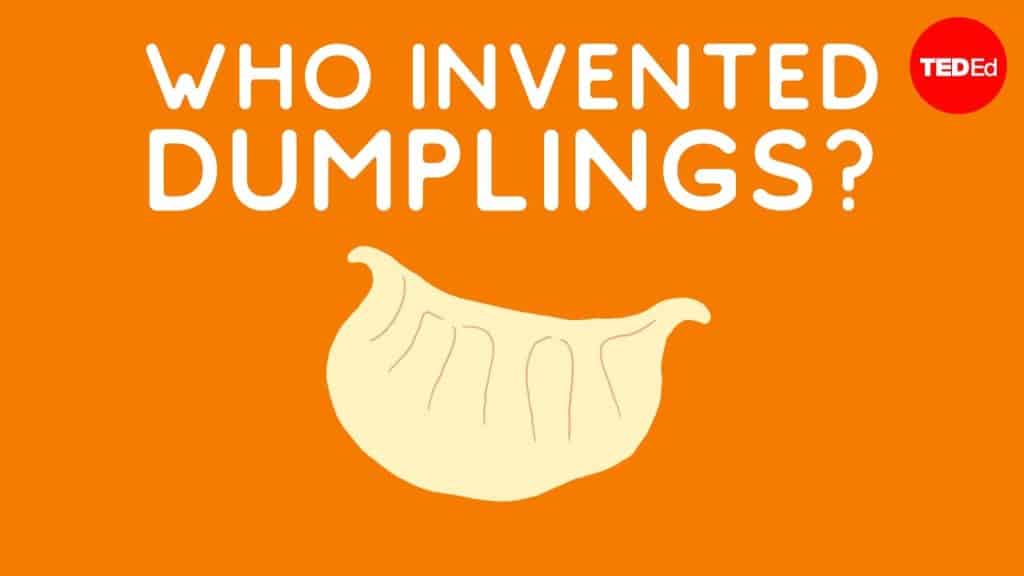Who Invented Dumplings?
As archaeologists pored over ancient tombs in Turfan in western China, they discovered some surprisingly well-preserved and familiar relics. Though hardened from over 1,000 years, there sat little crescent-shaped dumplings. Exactly who invented dumplings remains a mystery. But some scholars suspect they were first spread around parts of the ancient world by nomadic Turkic peoples living in western China and Central Asia. This is thought to be the case because “manti,” meaning “dumpling” or “steamed bun” in many Turkic languages, appears to be the root word for dumpling in several other languages.

Ancient Turkic people probably stuffed their dumplings with meat. But it’s unclear when this practice began, or whether they learned the art of dumpling-making from others. However this happened, dumplings certainly gathered steam in ancient China. That’s where they first appear in the written record: more than 1,700 years ago, in a mouthwatering rhapsody by scholar Shu Xi.
In his poem, Shu alludes to certain cooking methods coming from alien lands. He describes a steamed wheat product as “mantou.”And he reverentially chronicles the preparation of kneaded dough balls called “Lao wan.”They’re packed with pork, mutton, and aromatics, dipped in black meat sauce, then quickly gobbled up, leaving people downwind to drool and fantasy feast. Dumplings continued to take off and diversify in China for the next thousand years. Instead of the traditional meat filling, some communities opted for vegetarian dumplings.
People developed new cooking methods. And because wheat was harder to cultivate outside of northern China, those in other regions began making dumplings using rice, tapioca, and sweet potato. The relationship between Chinese dumplings and those in other areas is tricky to trace, but food historians have made their best guesses based on available clues. Turkic tribes spread and eventually established the Ottoman Empire around 1300 CE, bringing wrapped morsels west with them.
In what’s now Turkey, most people wouldn’t have stuffed dumplings with pork due to Islamic restrictions. Instead, manti would come to be filled with ingredients like lamb, drizzled with garlic, yogurt, and melted butter, then topped with herbs and spices. Some scholars believe that the Mongol Empire also helped disseminate dumplings, perhaps introducing them to parts of Eastern Europe. These dumplings could have come by way of China directly from some of the Turkic peoples the Mongols hired to run their empire.
One theory is that this gave rise to dumplings like Russian pelmeni, and the larger pierogi and vareniki, eaten in Poland and Ukraine, stuffed with things like potato, cabbage, cheese, and cherries. The Mongol Empire also controlled Korea and might have likewise introduced dumplings there, where “mandu” may be eaten with regional ingredients like kimchi.
Later, after Chinese dumpling varieties were introduced to more countries, English speakers began calling them dumplings. The term means “little lumps” and is thought to have been first used in 16th-century England to describe dough balls dropped in liquid. Like knödel and matzo balls, they would’ve had no filling. So, the word was actually confusingly imprecise, but it stuck, nonetheless. When Japan occupied China during the Second World War, Chinese “jiaozi” was brought to Japan, where they, in turn, became known as “gyoza” and were more typically pan-fried.
So what about the fact that every region in Italy has its own variety of dumpling-like stuffed pasta? Some historians think that Arab conquerors brought dumplings when they reigned over Sicily between the 9th and 11th centuries. But the jury’s still out. It’s unlikely that all dumpling-Esque dishes came from the same root tradition. In many cases, it may simply be that culinary visionaries from different cultures shared a similar revelation: that cooking fillings encased in the dough would be delightful. Either way, we can appreciate these plump pockets of perfection—and the tangled, mysterious historical web that’s made dumplings so diverse and divine.
